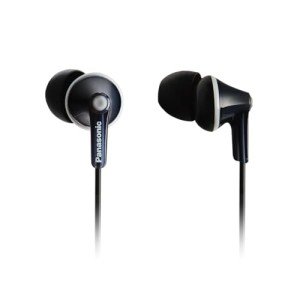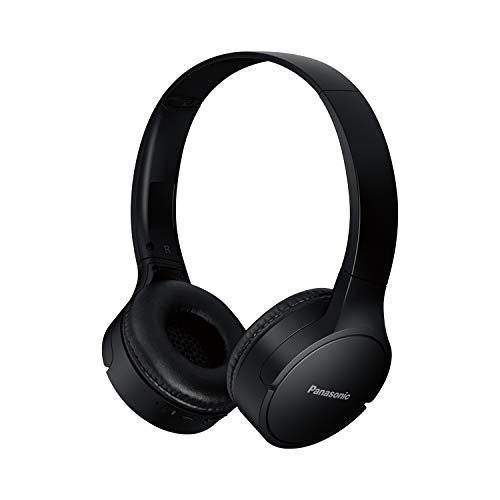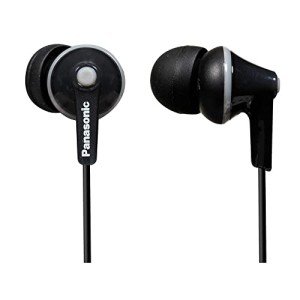If you're looking for quality sound without breaking the bank, Panasonic headphones have you covered. They offer great audio clarity, perfect for music lovers who want to enjoy their favorite tracks just the way the artists intended. Plus, they’re comfortable enough for long listening sessions, so you can really lose yourself in the music.
Panasonic Headphones
Experience Clear Sound and Comfortable Fit for Every Listening Adventure
Product List

Panasonic Ergonomic In-Ears – Black
Panasonic
Product Review Score
4.53 out of 5 stars
140 reviewsSGD 15.15 SGD 9.08

Panasonic Bluetooth On-Ear Headphones
Panasonic
Product Review Score
4.09 out of 5 stars
192 reviewsSGD 52.37

Panasonic Comfort In-Ear Headphones
Panasonic
Product Review Score
4.85 out of 5 stars
88 reviewsSGD 15.15 SGD 9.08

Panasonic RP-HJE125 In-Ear Headphones
Panasonic
Product Review Score
4.25 out of 5 stars
133 reviewsSGD 18.80

Panasonic RP-HS34E-K Sport Headphones
Panasonic
Product Review Score
4.47 out of 5 stars
22 reviewsSGD 22.73 SGD 18.18
In the vast landscape of audio devices, headphones play a crucial role, transforming the way individuals experience sound. Among the plethora of brands available today, Panasonic emerges as a noteworthy contender, combining innovation, quality, and affordability. This blog post delves into various aspects of Panasonic headphones, highlighting their features, types, comparisons, and a frequently asked questions section to guide potential buyers.
About Panasonic Headphones
Panasonic, a Japanese multinational company, has a rich history in the electronics industry, dating back to 1918. With decades of experience, Panasonic has made significant strides in the audio equipment sector, particularly headphones. Whether for casual listening, professional studio work, or active lifestyles, Panasonic has an impressive line-up that caters to diverse needs and preferences.
Types of Panasonic Headphones
Panasonic offers a wide variety of headphones, each designed for specific purposes and user preferences. Below is a breakdown of the different types of headphones available from Panasonic:
| Type | Description | Ideal For |
|---|---|---|
| Over-Ear | These headphones envelop the ear for immersive sound quality and comfort. | Long listening sessions, traveling |
| On-Ear | Smaller and more portable than over-ear models, they rest on the ear without completely covering it. | Everyday use, light exercise |
| In-Ear | These headphones fit snugly inside the ear canal, providing excellent isolation and portability. | Workouts, commuting |
| Wireless | Featuring Bluetooth connectivity, these models eliminate the need for cords, offering freedom of movement and convenience. | Active users, travel |
| Noise-Canceling | Designed to block out ambient noise, these headphones create a quiet listening environment through advanced sound technology. | Studying, traveling, noisy environments |
Key Features of Panasonic Headphones
When considering headphones, various features can significantly enhance the user experience. Panasonic integrates numerous technical specifications and advancements into their products. Here are some prominent features to look out for:
-
Sound Quality: Panasonic headphones are known for their balanced audio profile, providing clear highs, rich mids, and deep bass across various genres of music.
-
Comfort: Designs often include cushioned ear cups and adjustable headbands, ensuring comfort during prolonged use.
-
Battery Life: For wireless models, Panasonic emphasizes long battery life, with some models offering over 20 hours of playback time on a single charge.
-
Built-in Microphone: Many Panasonic headphones come with integrated microphones, allowing for hands-free calling and voice command capabilities.
-
Durability: Panasonic builds its headphones to withstand wear and tear, with many models sporting sweat and water resistance features, especially in workout ranges.
-
Foldable Design: Several models feature a foldable design for easy storage and portability, making them perfect for travelers.
-
Smart Features: High-end models may include touch controls, voice assistants, and customizable sound profiles.
Popular Panasonic Headphone Models
To distinguish some of Panasonic’s better-known options, here’s a table breaking down some of their most popular headphone models:
| Model | Type | Key Features | Price Range |
|---|---|---|---|
| Panasonic RP-HZ47A | Over-Ear | Foldable design, deep bass, comfortable padding | £50 - £80 |
| Panasonic RP-HTX80B | On-Ear | Retro design, Bluetooth connectivity, 24-hour battery | £100 - £150 |
| Panasonic RP-NJ300B | In-Ear | Noise isolation, 3 sizes of ear tips, sweat-resistant | £30 - £50 |
| Panasonic RP-BTS50 | Wireless | IPX4 water-resistant, high-quality sound, touch controls | £80 - £120 |
| Panasonic RP-HTX90N | Noise-Canceling | Stylish design, active noise cancelling, 20-hour battery | £200 - £250 |
Benefits of Choosing Panasonic Headphones
1. Affordability
Panasonic offers quality headphones at various price points, making them accessible for both budget-conscious buyers and audiophiles.
2. Brand Trust
With decades of experience in electronics, Panasonic assures its users of high-quality products backed by robust technology and customer service.
3. Versatility
The diverse range of headphone types ensures that there is a Panasonic product suitable for every type of listener, whether casual or professional.
Frequently Asked Questions (FAQ)
Q1: How do I choose the right Panasonic headphones for me?
A1: Consider your primary usage. If you're working out, look for in-ear or sweat-resistant options. For casual listening, over-ear or on-ear models may provide more comfort and sound quality.
Q2: Are Panasonic headphones compatible with mobile devices?
A2: Yes, most Panasonic headphones are compatible with smartphones, tablets, and laptops, particularly those with Bluetooth functionality.
Q3: How long do the batteries of wireless Panasonic headphones last?
A3: Battery life varies by model, but many Panasonic wireless headphones offer around 20 hours of playback time on a full charge.
Q4: Can I use Panasonic headphones for gaming?
A4: While some models can work well for gaming, it's advisable to check if a particular model offers low latency and a compatible microphone.
Q5: How do I care for my Panasonic headphones?
A5: Wipe them down with a soft, dry cloth after use, store them safely in a case, and avoid exposing them to extreme temperatures or moisture.
Panasonic headphones are a blend of quality, comfort, and affordability, catering to a wide spectrum of users from audiophiles to casual listeners. With various types and models available, they provide something for everyone. Moreover, the impressive technology and design that Panasonic continues to incorporate ensure that users enjoy a superior listening experience. Whether working out, commuting, or just sitting back to enjoy music, there's a Panasonic headphone model that fits the bill. As you explore your options, consider your needs, and rest assured that Panasonic headphones are a compelling choice in the audio market.